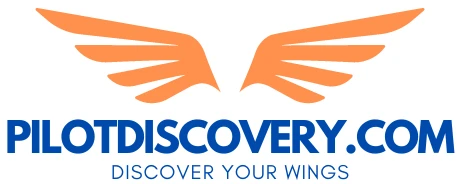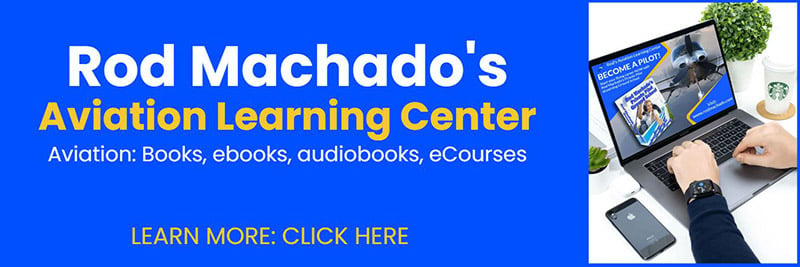Original publication date: November 29, 2021
Last Updated: 11 months
Author: Max Skyler
Topic: Flight Training
Number of Comments: 0
Becoming a pilot requires a growth mindset. It is an arduous and challenging endeavor that cultivates within you all of the essential qualities that this mindset encapsulates, namely perseverance, patience, discipline, problem-solving skills, and out-of-the-box thinking. Achieving the coveted status of licensed pilot ushers in a whole world of possibilities and untapped potential, in terms of lifestyle, mobility, freedom, and adventure.
To become a pilot requires a minimum of 40 hours of flight training, and the successful passing of a written exam, an oral exam, a medical exam, and a checkride. Having said that, the aforementioned are, in actuality, what constitutes an oversimplified summation of the bare essentials. In actuality, becoming a pilot will require a significant investment of time and money, requiring you to gain mastery over both theoretical knowledge as well as practical hands-on proficiency in the cockpit.
Is it hard to become a pilot? “Hard” is a relative term. Rather, it might be more appropriate to say that becoming a pilot takes a great deal of focus in order to acquire the knowledge and master the skills necessary in order to accomplish this goal. Let’s examine exactly what it takes to become a pilot.
Entry Level Aviation: The Private Pilot License
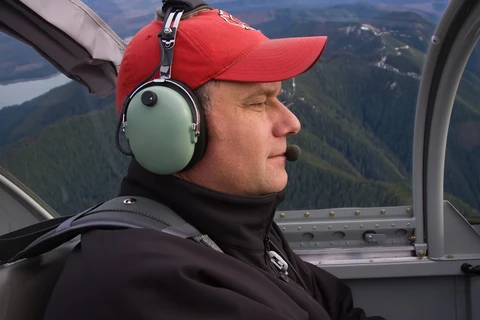
No matter whether you wish to pursue aviation strictly as a hobby, you want to fly for one of the major commercial airlines, or you want to get into commercial aviation in support of a business (eg- cargo planes, banner towing, crop-dusting, aerial photography, tourism, or private jets), the playing field has been leveled for everyone. All pilots have to start at the bottom rung of the ladder. All pilots must obtain a private pilot license.
With a private pilot license, you gain “entry-level” access into the world of general aviation. You can fly for your own leisure or in support of any other endeavor that does not involve you receiving compensation for flying. In other words, you can engage in any type of flying, as long as it is not for hire or you are not financially compensated for it.
You can fly your friends or family on a vacation. You can commute to work (as long as you are not being compensated for the act of flying or carrying passengers or cargo).
Let’s break down what is involved in obtaining your pilot’s license:
40 Hours of Instruction
First things first, you will need to spend a minimum of 40 hours in the airplane, in order to get your license. That is a bare minimum. The actual number of hours you end up spending in preparation for your private pilot license varies from person to person, depending on how quickly you are able to master the skills needed to demonstrate safe and competent pilotage. The majority of this will be with a flight instructor alongside you in the cockpit.
These 40 hours will cover all aspects of flying, such as the following:
| * pre-flight safety checks | * climbs | * slow-flight |
| * takeoffs | * descents | * cross-country flight planning |
| * landings | * stalls | * navigation procedures |
| * turns | * steep turns | * communication procedures |
Knowledge Test
Secondly, you will need to pass a written knowledge exam. (Written is actually a misnomer. These days, the “written” test is actually an online multiple-choice test, administered in a proctored environment.)
The knowledge test covers all aspects of the knowledge you will need to become a pilot. This covers everything including:
| * FAA (Federation Aviation Administration) rules and regulations | * navigation procedures | * emergencies |
| * takeoff procedures | * communications procedures | * how to communicate with Air Traffic Control |
| * landing procedures | * flight planning | * how to file a flight plan |
Before you can take the knowledge test, you must receive ground instruction from either a flight instructor, a classroom, or an online training course. After you have completed this, you must receive an endorsement that certifies that you have received the ground instruction necessary to take the knowledge exam.
Preparing for the written test itself can take several weeks or months of study, depending on how much time you put into it. And quite often, the knowledge you receive must be reinforced by practical hands-on training in the cockpit (and vice versa), before your understanding of these concepts can be solidified.
Equipment
While your flight school may provide you with the equipment you need, on loan, you will most likely end up needing to invest in some of your own equipment. Some equipment you would need to invest in includes the following:
| * fuel strainer | * subscription to an online ground school course, or enrollment in a live instructor-led class | |
| * flashlight | * electronic or physical flight computer for calculating ground speed, wind correction angles, course headings | |
| * paper and / or electronic flight charts | * headphones | |
| * textbooks |
Medical Exam
You will need to pass a medical exam. You have two options for the type of medical exam you wish to obtain: One is a “BasicMed” exam, administered either by your general physician. The other is a 3rd class medical exam, administered by FAA-certified Aviation Medical Examiner (AME).
BasicMed – This type of medical certification is sufficient for most beginner pilots who intend to fly domestically in single-engine aircraft within the continental US, Canada, or the Bahamas for non-commercial purposes.
3rd Class Medical – This type of medical certification entitles you to the same privileges as BasicMed, but allows you to fly bigger airplanes, and also allows you to fly into Canada and internationally to other countries where BasicMed is not already accepted.
In either case, these medical exams intend to ensure that you are medically cleared to fly and that there are no impediments to you being able to safely operate an aircraft. Vision, hearing, and general mental and physical health are assessed during both of these exams.
Solo Endorsement
You will have to obtain a solo endorsement at some point mid-way through your training, which is a sign-off from your flight instructor that you are capable of piloting an aircraft by yourself without any assistance from an instructor.
Cross-Country Endorsement
Once you obtain your solo endorsement, you will also need to work toward your cross-country endorsement. This allows you to fly solo across longer distances, which are a minimum of 50 nautical miles from your airport of origin. A minimum of 10 hours of cross-country flight are required (which may count toward the overall 40) in order to obtain your private pilot license.
Oral Exam
You will have to sit for an oral exam with an FAA Designated Pilot Examiner (DPE). It will be a one-hour session during which you will be asked questions to test your knowledge of the FAA rules and regulations, policies and procedures, and to demonstrate your problem-solving and flight-planning skills.
Checkride
The very last step on your journey toward obtaining your private pilot license is to pass a checkride, which is a flight test, also administered by a DPE. Typically the checkride is administered either the same day or the next day after the oral exam, with the same DPE.
During this checkride, the DPE will test your proficiency with all required policies and procedures of flying. Everything is fair game to be assessed during the checkride, including, but not limited to:
| * takeoffs | * descents |
| * landings | * turns |
| * climbs | * emergency procedures |
| * navigation | * communication |
Once you have passed your checkride, you will have earned your wings. Once you have earned your wings, you may be curious to know what kind of plane can you fly with a private pilot license.
License Renewal
Do you have to renew your license?
No… Once you obtain your pilot license, it is valid for life.
But you must do 3 take-offs and landings within the previous 90 days, in order to be legally allowed to carry passengers with you. Plus, you must maintain your medical currency as required per FAA regulations.
| Certification Type | Private Pilot License |
| Minimum Required Hours Of Instruction | 40 |
| Hours of Solo | 10 |
| Hours of Cross Country | 3 |
| Hours of Night Flight | 3 (10 takeoffs & landings) |
| Hours of Instrument Time | 3 |
| Total Hours Cumulative | 40 |
| Medical Certificate | 3rd Class |
| Written Exam | Yes |
| Oral Exam | Yes |
| Checkride | Yes |
| Minimum Cost | These are typical costs, assuming 40 hours of instruction only. Actual costs could exceed these. $50 per hour of instruction x 30 $150 aircraft rental x 40 = $6000 per aircraft rental + $1500 instructor time + $150 medical exam + $150 written test + $300 checkride + $150 ground school = $8,250 Minimum |
Honing Your Skills: Leveling Up To An Instrument Rating
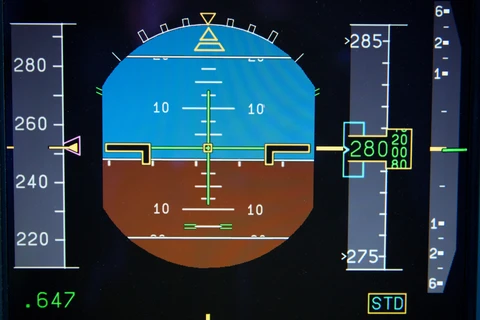
There is a saying in aviation: The private pilot license is a license to learn.
This is because the private pilot license is considered to be your “entry-level” ticket to flying.
To truly become a proficient pilot requires more experience and more education.
Hence, the next step that most pilots take after they obtain their private pilot license is to pursue an Instrument Rating.
An instrument rating, while not technically required per se, is absolutely essential if you want to get into commercial aviation, or if you want to be able to overcome the limitations of your private pilot license.
The private pilot license restricts you to fly on good weather days only. You cannot fly through the clouds with a basic private pilot license. The Instrument Rating frees you of that restriction and enables you to fly through clouds and in low-visibility conditions.
It also equips you with the tools and skills to help you become a safer and more competent pilot. (It is no wonder that most aviation insurance companies will offer a discount to pilots who have their instrument rating, as opposed to pilots who do not.)
The knowledge and skills that you will acquire as part of your instrument training are designed to reinforce and build upon the knowledge and skills you have already acquired when obtaining your private pilot license.
Here is a quick rundown of the effort involved in earning your Instrument Rating:
40 Hours of Instruction
Obtaining your Instrument Rating will require a commitment of a minimum of another 40 hours of instruction, all of which must be spent in either simulated or actual instrument conditions. As with your private pilot license, the actual number of hours will vary depending on how quickly you are able to master the maneuvers and procedures involved in instrument flying.
Simulated instrument flying means that you will be either using a computer simulator or you will be flying while wearing a view limiting device, to simulate overcast cloudy conditions whereby you are unable to see outside the cockpit, thus compelling you to rely exclusively on the instrument panel for all of your navigation.
These 40 hours will cover all aspects of instrument flying, such as:
| * takeoffs | * instrument landings |
| * departure procedures | * navigation |
| * enroute procedures | * emergencies |
| * arrival procedures | * aborted landings |
| * approach procedures | * Air Traffic Control (ATC) rules and regulations |
Knowledge Test
As with the private pilot license, you will also need to pass a written instrument knowledge exam.
The knowledge test covers all aspects of Instrument Flying, such as FAA (Federation Aviation Administration) rules and regulations, takeoff and landing minimums, departure, en route, arrival, and terminal procedures, navigation, communicating and complying with ATC directives, flight planning, emergencies, aircraft performance characteristics, weather, and much more.
Before you can take the knowledge test, you must receive ground instruction from either a flight instructor, a live class, or an online training course. After you have completed this, you must receive an endorsement that certifies that you have received the ground instruction necessary to take the knowledge exam.
Preparing for the written test itself can take several weeks or months of study, depending on how much time you put into it. And quite often, the knowledge you receive must be reinforced by practical hands-on training in the cockpit (and vice versa), before your understanding of these concepts can be solidified.
Equipment
One piece of equipment that every pilot utilizes heavily during their instrument training is a view-limiting device (as alluded to above). This is typically in the form of either a visor or a special type of opaque glasses that obscure your field of vision at anything at or above eye level. These are intended to simulate clouds or fog. (The glasses are often referred to as “foggles”, which is a play on the word “goggles”.) If you were to look straight ahead of you while wearing these in the cockpit, you would not be able to see anything outside the window. You would only be able to see the instrument panel, which is in the lower hemisphere of your field of vision.
Medical Exam
You will not need to pass a separate medical exam in order to get your Instrument Rating. The medical certificate you had obtained for your private pilot’s license is sufficient, as long as it has not expired.
Solo
Unlike private pilot training, you never fly solo as part of your instrument training. This is due to the catch-22 that you cannot fly solo safely solely by reference to instruments until you get your license. Instrument training inherently necessitates a safety pilot to accompany you, who can be your eyes and ears, to ensure that you stay clear of other aircraft, obstructions, or the ground and that you don’t violate any FAA regulations during your training because you could not see outside.
Cross-Country Requirements
You must have flown a minimum of 50 hours of cross-country time by the time you get your instrument rating. This includes all cross-country hours earned before you got your private pilot license. Plus, you will have to fly at least one flight that is a minimum of 250 nautical miles in total distance from start to finish.
Oral Exam
You will have to sit for an oral exam with an FAA Designated Pilot Examiner (DPE). It will be a one-hour session during which you will be asked questions to test your knowledge of the FAA rules and regulations, policies and procedures, and to demonstrate your problem-solving and flight-planning skills, as they pertain to instrument flying.
Checkride
As with the private pilot license, you will need to pass an instrument checkride, which is to be administered by a DPE. Typically the checkride is administered either the same day or the next day after the oral exam, with the same DPE.
During this checkride, the DPE will test your proficiency with all required policies and procedures of instrument flying. Everything you learned during your instrument training is fair game. It could be flown in simulated instrument conditions (which typically happens if it is not cloudy outside) or in actual instrument conditions (if it is cloudy outside).
Once you have passed your checkride, you will have earned your instrument rating.
When it comes to being able to use your instrument rating, you are required to maintain specific currency requirements. You must log at least 6 instrument approaches within the previous 6 months. Failure to do so means that you will have fallen behind on your currency, and you will have another 6 months to make up for them, after which if you fail to do so, you will not be allowed to fly on an instrument flight plan without first passing an instrument proficiency check with an instructor.
| Certification Type | Instrument Rating |
| Minimum Required Hours Of Instruction | 40 – At least 15 must be with a flight instructor |
| Hours of Solo | N/A – Solo flight not allowed during instrument training. |
| Hours of Cross Country | 50 – Cummulative lifetime total 1 flight must be at least 250 nautical miles (NM) in length, with a minimum of 3 instrument approaches at airports en route. |
| Hours of Night Flight | N/A – Night flight not required as part of training. |
| Total Hours Cumulative | N/A |
| Medical Certificate | 3rd Class |
| Written Exam | Yes |
| Oral Exam | Yes |
| Checkride | Yes |
| Minimum Cost | These are typical costs, assuming 40 hours of instruction only. Actual costs could exceed these. $50 per hour of instruction x 40 $150 aircraft rental x 40 = $6000 per aircraft rental + $2000 instructor time + $150 medical exam + $150 written test + $300 checkride + $150 ground school = $8,750 Minimum |
Going Commercial: Making Money With Your Pilot’s License
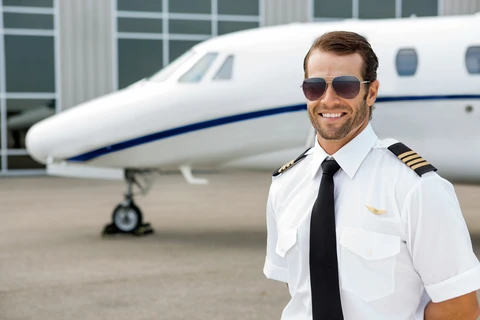
If your ultimate goal is to get paid to fly, then the next logical step in your aviation progression is to pursue your commercial pilot license.
It is only with a commercial pilot license that you will be able to get compensated for flying, whether it is for carrying passengers, cargo, or any other type of commercial operations.
As far as prerequisites are concerned, you cannot get your commercial license until after you have earned your private pilot license first.
And while it is not required to obtain your Instrument Rating before you can obtain your commercial pilot license, it is strongly recommended that you do so.
If you were to pursue your commercial license without first having obtained your instrument rating, then your ability to utilize your commercial license to its fullest potential will be substantially limited. All it would take to ground you would be overcast skies or inclement weather… and you would experience loss of income or loss of productivity for your business. It is for this reason that it makes sense to get your instrument rating first…
Not to mention that the requirements in terms of your minimum flight experience are much higher for a commercial license as opposed to your instrument rating. (You need a total of 250 hours of flight time, of which 100 of them must have been as pilot-in-command).
You will need a minimum of 20 hours of instruction in the areas of the FAA regulations pertinent to the commercial license.
Essentially, what a commercial pilot license does is hold you to higher standards in terms of precision flying, aircraft performance, and safety, to the level that would be deemed acceptable for the type of flying that commercial flight operations entail, namely: carrying passengers and cargo safely from point A to point B.
Knowledge Test
As with the private and the instrument rating, you will need to pass a written knowledge test pertinent to the FAA rules and regulations concerning the commercial pilot license. Before you can take the commercial knowledge test, you will have to have received ground instruction either one-on-one with your flight instructor, in a classroom, or self-paced through an online training course. After you have completed your ground training, you must receive an endorsement that certifies that you have received the ground instruction necessary to take the commercial knowledge exam.
Medical Exam
Until now, you will have either obtained a 3rd class medical certificate or you will have satisfied the requirements for BasicMed. But for a commercial pilot license, you will need to obtain a 2nd class medical certificate, which has more stringent medical requirements than either the 3rd class or BasicMed.
Oral Exam
As with the private pilot license and the instrument rating, a DPE-administered oral exam is also required for the commercial license as well. During this session, you will be interrogated for your knowledge of commercial-specific FAA rules and regulations, policies and procedures, and assessed for your problem solving, flight planning, and flight management skills.
Checkride
As with the private and with the instrument rating, you will have to undergo an hour-long oral exam administered by an FAA Designated Pilot Examiner (DPE). During this session, the examiner will interrogate you and engage you in a dialogue or discussion designed to test your knowledge and comprehension of the FAA rules and regulations, policies and procedures, and to demonstrate your problem-solving and flight-planning skills, as they pertain to commercial flying.
As with both the private and the instrument rating, you will need to pass a DPE-administered commercial checkride.
During this checkride, the DPE will test your proficiency with all required policies and procedures of instrument flying. Everything you learned during your instrument training is fair game. It could be flown in simulated instrument conditions (which typically happens if it is not cloudy outside) or in actual instrument conditions (if it is cloudy outside).
Once you have passed your checkride, you will have earned your Instrument Rating.
What can you do with your commercial pilot license?
Once you have received your commercial license, you will be eligible to get paid to fly. With a combination of an instrument rating and a commercial license, you will be able to fly for hire in any type of weather condition.
However, a commercial license in and of itself will not qualify you for flying for a major airline. You will need even more advanced training for that.
Some examples of pilot jobs you can get right off the bat with a newly minted commercial pilot license include:
| * banner towing | * aerial photography |
| * crop-dusting | * aerial inspection / reconnaissance |
| * medical transport | * search and rescue missions |
| * charter passenger flights | * evacuations |
| * tourism | * cargo transport |
| * courier service |
| Certification Type | Commercial Pilot License |
| Minimum Required Hours Of Instruction | 20 |
| Hours of Pilot In Command (PIC) Time | 100 |
| Hours of Cross Country | 50; One 2-hour day cross-country flight of at least 100NM straight-line distance from the departure airport. |
| Hours of Night Flight | One 2-hour night cross-country flight of at least 100NM straight-line distance from the departure airport. |
| Hours of Complex Training | 10 hours of training in a complex airplane (variable-pitch propeller, retractable landing gear), turbine-powered aircraft, or technically advanced airplane (TAA) with an electronic flight display. |
| Hours of Instrument Time | 10 |
| Prerequisite Certifications | Private Pilot License |
| Total Hours Cumulative | 250 |
| Medical Certificate | 2nd Class |
| Written Exam | Yes |
| Oral Exam | Yes |
| Checkride | Yes |
| Minimum Cost | These are typical costs, assuming 20 hours of instruction only. Actual costs could exceed these. $50 per hour of instruction x 20 $150 aircraft rental x 20 = $1000 per aircraft rental + $3000 instructor time + $150 medical exam + $150 written test + $300 checkride + $150 ground school = $4,750 Minimum |
Essential Add-Ons On The Journey To Flying Bigger and Faster Airplanes:
Each of the aforementioned certifications and ratings greatly expands the limits of what you can do as a pilot. But each of them is not without their own respective limitations.
There are certain “add-ons”, known as endorsements that are absolutely essential to being able to maximize your instrument and commercial ratings to their fullest potentials.
Multi-engine
By default, all of your pilot training for the private, instrument, and commercial ratings can be done in single-engine aircraft.
A multi-engine rating is not required for private, instrument, or commercial operations. You can theoretically exercise the privileges of these ratings just fine without them. However, your flight repertoire will be substantially limited without the multi-engine rating.
In order to fly a multi-engine aircraft, you will need to earn a multi-engine rating. This is not a separate pilot certificate, as the private, instrument, or commercial ratings are. Rather, this is an add-on, which then allows you to fly solo, as a private, instrument, or commercial-rated pilot.
You will be bound by the performance limitations of single-engine aircraft. You won’t be able to fly as far, as high, or as fast you might otherwise have been able to, in a multi-engine aircraft.
So your options, in terms of commercial flight, for example, would be seriously limited. As a commercial pilot, flying a single-engine aircraft, your maximum range might not be more than 500 to 700 miles before you would have to refuel. And you would not be able to carry more than roughly 1000 pounds worth of passengers and cargo otherwise, without a multi-engine rating either. Your flights would also be longer, as you would be limited in terms of speed.
Complex
As a novice private pilot, you most likely will have learned to fly in aircraft that do not have retractable landing gear and which have fixed-pitch propellers.
A complex endorsement allows you to operate aircraft with retractable landing gear and variable-pitch propellers.
As with the multi-engine rating, you do not need to get a complex endorsement to exercise the privileges of a private, instrument, or commercial license. However, the type of aircraft you can fly will be limited.
If you want to fly a high-performance aircraft, you are going to need to train on the mechanics and the physics involved in landing-gear operations. It is not only “how to raise and lower the landing gear”, but how to deal with emergencies in which the landing gear does not retract, and what are the performance characteristics and limitations of flying with or without landing gear.
High-Altitude
If you want to fly faster, you need to fly high-performance jet aircraft that are capable of flying at higher altitudes.
The day you get your private pilot’s license, you are legally not allowed to fly at or above 18,000 feet above mean sea level (MSL). Never mind the fact that most basic trainer aircraft won’t even fly anywhere near that high, to begin with.
Once you get your Instrument Rating, you will be legally allowed to fly in class A airspace, which is all airspace from 18,000 feet to 60,000 feet MSL.
However, without a proper understanding of high-altitude aircraft aerodynamic performance, high-altitude meteorology, the effects of being exposed to the atmosphere at high-altitudes (hypoxia, high-altitude sickness, etc.), the proper use of supplemental oxygen, and how to handle emergencies (such as rapid decompression of a pressurized cabin), flying at high altitudes would be extremely risky and potentially hazardous.
That is why the FAA has mandated the high-altitude endorsement, which includes both ground training as well as practical training in pressurized aircraft at high altitudes, typically above 25,000 MSL.
ATP – Air Transport Pilot
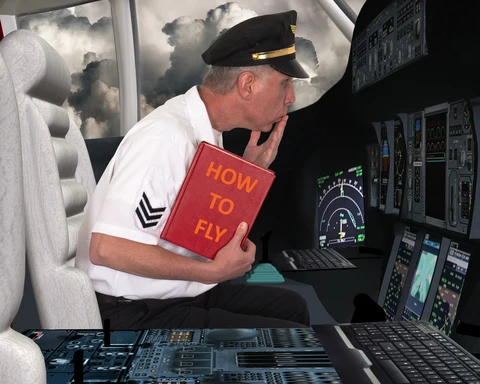
Once you obtain your high-altitude endorsement, in conjunction with an instrument rating and multi-engine rating, you will finally be able to really go places far and fast! As a practical matter, the vast majority of pilots typically aren’t able to rent or buy their own multi-million dollar multi-engine high-performance, high-altitude jet aircraft for their own personal use.
Hence, chances are very likely that the only way you will ever get to fly such an aircraft is if you are doing it as a commercial endeavor. Therefore, to fly one of these types of aircraft, you will absolutely need to get your commercial license.
Having said that, even the full suite of private, instrument, commercial, multi-engine, complex, and high-altitude endorsements is only enough to get you into the cockpit of small to medium commercial aviation opportunities.
If you want to fly for public or charter passenger or cargo airline services, you will need an Air Transport Pilot (ATP) certificate, which is the highest aircraft certification issued by the FAA.
ATP Requirements:
If you ever were wondered how hard is it to become a pilot, you should know that it is no easy feat:
You must have accumulated 1,500 hours of flight time before you can obtain your ATP certificate! That is a lot of flying. Out of these 1,500 hours:
- at least 500 of them must have been cross-countries (flights of 50 nautical miles or more)
- 100 hours must have been at night
- 75 hours must have been under instrument conditions (real or simulated)
- 250 hours must have been as pilot-in-command
Medical Exam
In order to obtain your ATP rating, you must pass a 1st class medical exam administered by an FAA-certified AME. 1st class medical certificates have even more stringent requirements than their 2nd or 3rd class counterparts and must be renewed more frequently, at 6-month intervals.
Written, Oral, and Checkride Exams
As with the private, instrument, and commercial ratings, you must also pass a written knowledge exam, an oral exam, and a checkride in order to obtain your ATP rating.
How long does it take to get your ATP?
Even if a pilot could theoretically fly for 40 hours a week, it would take over 9 months just to reach this goal.
But practically speaking, 40 hours a week can be extremely taxing, not to mention very expensive, particularly if the pilot is paying for any of the flights out of pocket. Spending 8 hours of flight time in the air also requires spending up to a couple more hours per day on the ground, spent in pre-flight and taxiing.
If a pilot were to fly 20 hours a week, it would take over 18 months to reach this goal. This is at least somewhat more attainable and within the realm of possibility.
Since it would be cost-prohibitive for most would-be aspiring ATPs to pay for each and every hour of their 1500 hours of flight out-of-pocket, what most pilots do is take other commercial aviation jobs to help them build up the hours.
How To Build Time To Get To 1500 Hours
Become a Certified Flight Instructor (CFI)
One of the most common ways for pilots to build time to get to 1500 hours is to become an FAA Certified Flight Instructor (CFI).
You get paid to teach others how to fly. It is a win-win. A 2- to 3-year stint as an instructor, taking on a few students, on a full-time or part-time basis can help you build up some hours toward the 1500 goal.
The catch-22 is that becoming a CFI itself requires you to spend time and money to undergo training, and to study for and pass your written, oral, and checkride exams, before you can apply for flight instructor jobs through your local flight school.
When it comes to becoming a flight instructor, you do want to make sure you get into instructing with the right motivation in mind. It is not uncommon for many pilots to simply use their CFI status as a mere stepping stone to help you build up your hours to reach the magic number, for your ATP rating.
While there is nothing wrong with that, at the same time, you want to make sure that you are giving it your all and that you are fully vested in your instructing career. This is important because your attitude toward instructing will manifest itself in your ability to create a positive experience for your students. A discussion about flight instructing is beyond the scope of this article, but this is something to keep in mind.
Get Commercial Jobs That Don’t Require an ATP Rating
Some examples of commercial pilot jobs that don’t require ATP ratings include:
| * crop dusting | * small group tours |
| * banner towing | * small charter air-taxi service |
| * aerial photography | * small-scale courier service |
Buy Your Own Airplane and Fly For Yourself
Start flying yourself, your family, and friends on frequent vacations and trips. If you plan to do a lot of flying, then it might make more sense to buy your own airplane rather than keep renting, if the aggregate aircraft ownership and maintenance costs end up being less, over the course of time, then renting. Pursuing a career in aviation is no doubt a costly undertaking. Here are some tips on how you can save money over the course of your flight training.
| Certification Type | ATP (Airline Transport Pilot) License |
| Age Requirement | You must be at least 23 years of age. |
| Hours of Pilot In Command (PIC) Time | 250 |
| Hours of Cross Country | 500 |
| Hours of Night Flight | 100 |
| Hours of Aircraft Type Experience | 50 hours in the type of aircraft for which you are obtaining the ATP rating. |
| Hours of Instrument Time | 75 |
| Prerequisite Certifications | Commercial Pilot License Instrument Rating |
| Total Hours Cumulative | 1500 OR 750 military pilot time OR 1000 if you have a Bachelors Degree in Aviation OR 1200 if you have an Associates Degree in Aviation |
| Medical Certificate | 1st Class – For PIC operations; 2nd Class – For First Officer operations |
| Training Requirements | Airline Transport Pilot (ATP) Certification Training Program (CTP): – 30 hours of ground instruction – 10 hours of practical training in a FSTD (Flight Simulation Training Device) |
| Training Providers | https://www.faa.gov/pilots/training/atp/media/atp_ctp_providers.pdf |
| Written Exam | Yes |
| Oral Exam | Yes |
| Checkride | Yes |
| Minimum Cost | Costs can vary but may average approximately $5,000 for the ATP-CTP. |
The Sky Is The Limit
How far you go in aviation depends on what your goals are. Many pilots are content to remain private pilots. Many will go on to get their instrument ratings. Some may go as far as getting their commercial rating but choose not to get their ATP. It is all a matter of assessing your personal goals and seeing where aviation fits into your lifestyle, as either a career or as a hobby.
